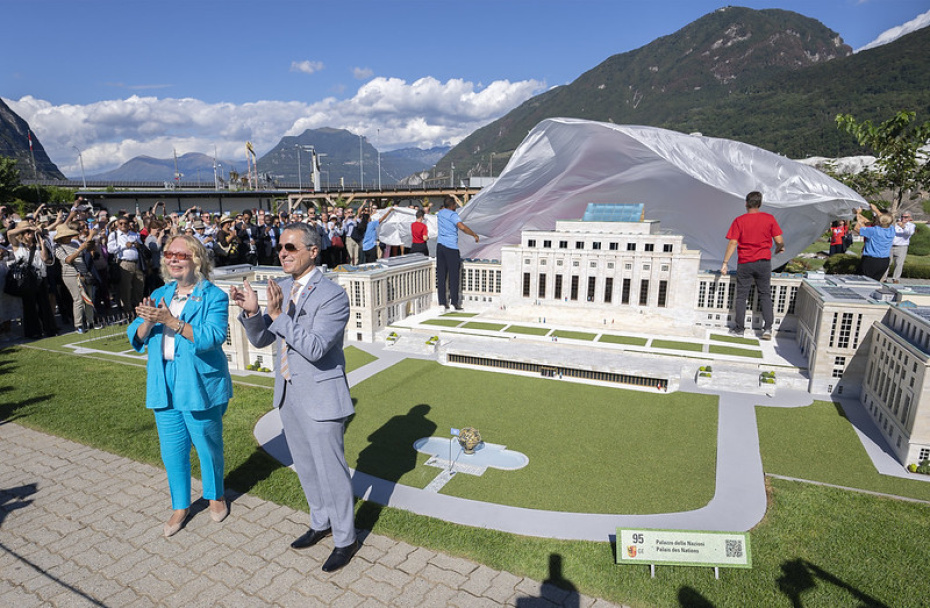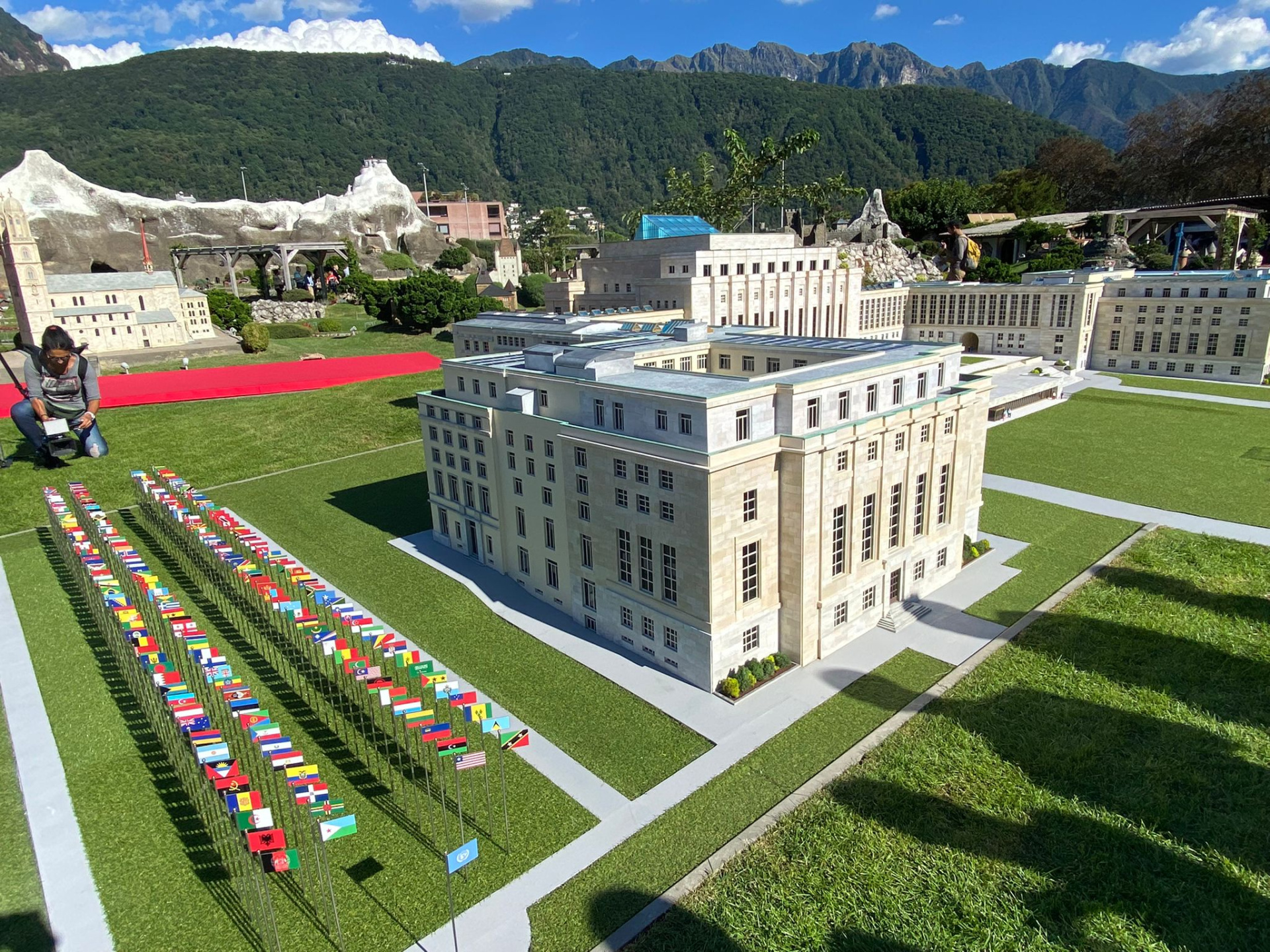Breadcrumb

Switzerland marks 20 years at the United Nations

Switzerland today unveiled a model version of the Palais des Nations in its largest open-air museum, Swissminiatur, to mark the 20th anniversary of its membership at the United Nations.
UN Geneva Director-General Tatiana Valovaya joined Swiss President Ignazio Cassis and the President of the Republic and Canton of Ticino, Claudio Zali, in Melide, on the shores of Lake Lugano, for the event.
Switzerland joined the United Nations on 10 September 2002 after nearly 55 per cent of Swiss citizens voted in favour of becoming a member of the Organization in a national referendum held earlier that same year – the only country to do so based on a popular vote.
Commitment to multilateralism
Over these past 20 years, Director-General Valovaya said the UN’s 190th member had become “an even more valuable partner of the United Nations family”. She said the addition of a model version of the Palais in the park was “a reflection of Switzerland’s strong commitment towards multilateralism”, adding that the country had shown unfailing support in areas such as peace, sustainable development, human rights, but also critical leadership in global health, digital governance and technologies.
Quoting former UN Secretary-General Kofi Annan, who was present when the Swiss flag was first raised at the United Nations, Valovaya said that “Switzerland is, in many ways, a vivid example of what the United Nations stands for: a peaceful, multicultural society built on strong democratic traditions.”
Swiss President Ignazio Cassis recalled Switzerland’s decisive role in the creation of the Human Rights Council and in the development of the 2030 Agenda. He said his country’s greatest task at the UN lay ahead, however, as Switzerland gets ready to take a non-permanent seat at the Security Council for the period 2023-2024.
Some 1,000 Swiss citizens today work at the United Nations, and the Swiss Confederation has become the 17th largest contributor to the UN budget. It also contributes generously to multilateral funds and specialised agencies, including the World Health Organization, the Food and Agriculture Organization and the International Labour Organization.

Sign of hope
The Palais des Nations is a landmark of Geneva, the capital of multilateralism. Built between 1929 and 1937 to host the League of Nations, it is one of the largest diplomatic conference centres in the world. As a symbol of peace and international cooperation, the Palais embodies values shared by both Switzerland and the UN, said Valovaya.
For President Cassis, the Palais des Nations is both a painful reminder and a sign of hope. On the one hand, it symbolizes the failure of the League of Nations following the return of the balance of power between States. But, he said, it also embodies the rebirth of “modern” multilateralism under the aegis of the UN, which has survived several crises, and which is now being sorely tested by new armed conflicts, even in Europe. “It is up to all of us, in Switzerland as elsewhere, to strengthen and modernize this multilateralism,” he said.
He added the renovation of the Palais des Nations, a major investment by the international community, would contribute to reinforcing multilateralism.
Swissminiatur is home to 129 models of Switzerland’s most famous buildings, monuments, and means of transport in the unusual 1:25 scale. Visitors can enjoy reproductions of famous Swiss castles, the Parliament Building in Bern, Locarno’s Piazza Grande, and now the Palais des Nations, which has joined this family of masterpieces.
Switzerland at the UN: key moments
3 March 2002: 54.6 per cent of Swiss citizens vote in favour of joining the United Nations
10 September 2002: Switzerland officially becomes the United Nations 190th Member State
14 September 2010: Then-Foreign Affairs Minister Joseph Deiss is elected President of the 65th General Assembly
9 June 2022: Switzerland is elected to the 15-member United Nations Security Council from 2023 to 2024
